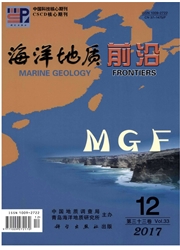

 中文摘要:
中文摘要:
海底滑坡广泛发育于海底陆坡,是沉积物往深海盆地搬运的重要方式。大规模的突发性海底滑坡事件不但可以改变海底地形地貌,还可能触发海啸,给沿海地区居民的生命和财产带来巨大损失。对海底滑坡地震响应特征进行研究,可以推断其物质来源、形成机制以及演化模式,为人类的防灾减灾提供科学依据。神狐海域地处被动大陆边缘,海底构造复杂,大陆坡较陡,具有发育海底滑坡的条件。结合最新采集的三维地震数据,在南海北部神狐海域发现了多期海底滑坡,研究表明,这些海底滑坡在地形上具有以下特征:在坡度剧烈变化处,有弧形主陡坎,沿着主要陡坎的两侧向下延伸则会出现近平行的侧壁,在海底峡谷侧壁和在较顺直的海底斜坡上存在圈椅状陡坎或陡壁。在对研究区海底滑坡的地震响应特征分析的基础上,研究了海底滑坡的地貌特征、内部结构及几何形态,探讨了南海北部陆坡神狐海域海底滑坡的形成机制,对于开展区域海洋工程,防止灾害发生具有重要意义。
 英文摘要:
英文摘要:
Submarine landslide occurs widely on the continental slope. It is one of the major forces affecting the morphology of continental margin, and one of the major mechanisms to transport sediments from the shallow water to the deep basin. Episodic large-scale submarine landslide may trigger tsunami and cause huge losses in property and human life in coastal areas. Therefore,it is of significance to investigate the distribution, source,mechanism and evolution of submarine landslides. The South China Sea is of a passive continental margin, characterized by rifted and rotated fault blocks and steep continental slope. Therefore, there are often submarine sliding. Typical geomorphologic features of a submarine landslide include an arcuate headscarp, a sharp valley with sub-paral'lel sidewalls and slumped material at the base of the valley sometimes. Some slumps have been discovered in the Shenhu area on the north margin of South China Sea with 313 seismic data. In this pa- per, we discussed the triggering mechanism of sea bottom slumping in the study area in addition to morphological features and seismic identification criteria.
 同期刊论文项目
同期刊论文项目
 同项目期刊论文
同项目期刊论文
 期刊信息
期刊信息
